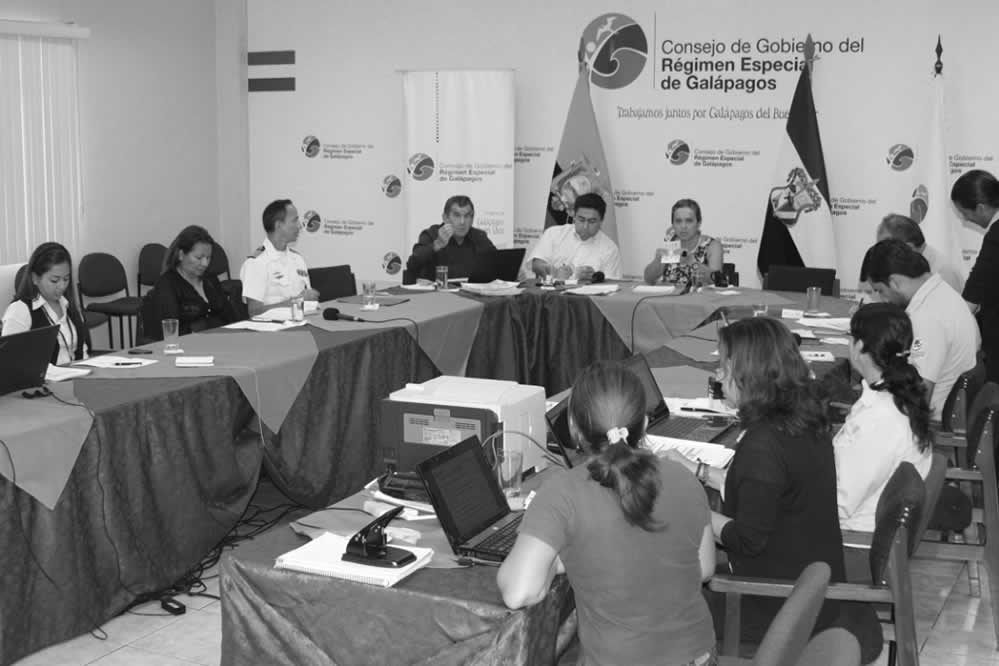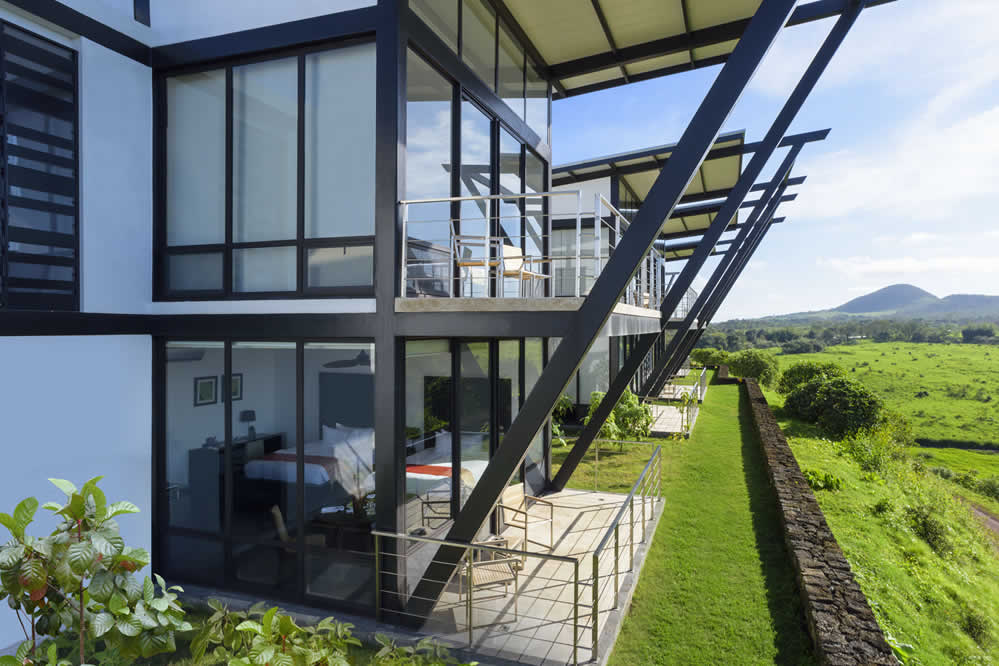The environmental sustainability of Pikaia lodge in a land-based tourism model
When we talk about the environmental sustainability of Pikaia Lodge, we can't limit it to the environmental sustainability of our buildings and its operation. We have to question the very existence of Pikaia Lodge. One school of thought is that tourism, and the development of more tourist infrastructure will harm the unique wildlife of the Galapagos, and this is a valid concern and one that we share.
However, many people involved in the work to achieve equilibrium between development and preservation, including the Galapagos National Park Service and the Ecuadorian environmental authorities, believe that eco-tourism is an important part of the solution to preserving the Galapagos Islands. The key is tight regulation and effective management. The Galapagos tourism model is not, and will never be, similar to the hedonistic, resource-intensive model of south-east Asia or the Caribbean.
Neither is it Ibiza, nor Hawaii, with mass tourism and massive hotel infrastructures, casinos, golf, discos, crowded beaches and condos. The Galapagos model is designed exclusively for a controlled number of very selective eco-tourists, who will eschew over-development; this is why people travel to the Galapagos in the first place.
Ecuador understands that the islands are fragile and must be protected. A strict Galapagos law, internationally recognised as a landmark legislation, has been put in place specifically to prevent such overdevelopment. This law limits even the constitutional right for Ecuadorians to settle in the islands, to prevent overpopulation and reduce demand on resources. But the Galapagos Islands do face complex local, social and economic challenges, which we are working to identify and address.

Galapagos land-based tourism model
The Galapagos Islands are one of the most ecologically diverse hotspots on the planet. A focus on environmental sustainability is fundamental, especially during the development of a new land-based tourism model (hotel stay/day tours) rather than the traditional live-aboard yacht/cruise ship model. To manage tourist numbers, the authorities do not issue new permits for live-aboard yacht or cruise ships, nor for increasing passenger capacity, and have not done so for nearly 20 years. But each year more people want to visit the Galapagos.

Ecuador understands that eco-tourism is a valid, sustainable way to create income in its efforts to overcome unemployment, without damaging the environment.
The Galapagos Islands are the country's number one tourist attraction; many visitors to The Galapagos also travel to the country's other national parks and generate a sustainable income for them as well. The Galapagos National Park Service is financed entirely from park fees. Only 0.5% of the total National Park area is visited by tourists, and these few sites are still extremely well-preserved and well-managed.

It is because eco-tourism was developed here 40 years ago, well-managed by authorities and supported by the private tourism sector, that wildlife still thrives here, both on the land and in the sea.
The "ecological capital" of the islands is best protected from permanent destruction by harnessing it for eco-tourism, even with the potential challenges this entails. The shift from a live-aboard cruise to a land-based tourism model, also creates non-extractive, sustainable jobs and investment opportunities for some of the 30,000 existing residents on the islands.

The benefits of this new tourism model
The land-based model stimulates and supports local business and services. It aims to distribute the economical benefits of eco-tourism among the local population. There are many examples of the social and environmental benefits of this model. In the past, some local fishermen would illegally catch sharks for their fins. They are now given the opportunity to switch their fishing permits for new day-tour diving permits, protecting sharks and other marine life, and taking divers and snorkelers to them.

Or for those with new vivential fishing day-tour permits, their new income from recreational sport fishing and snorkeling tours contrasts with their previous Galapagos income earned from fishing. Even farmers that would banish giant tortoises and endemic birdlife that damage their crops, or unwittingly introduce invasive commercial species and harmful chemicals for pest control, have found new income alternatives by developing small eco-tourism services and supporting wildlife on their lands.

This model suggests the possibility of a virtuous circle; as wildlife is perceived not as a pest or export commodity, but a source of income through eco-tourism and conservation.
At Pikaia Lodge we believe that, well-regulated and managed, our land-based tourism is a positive model for the long-term preservation of the islands, combined with social stability and economical wellbeing for the settler communities. Pikaia Lodge has created more than 60 new jobs for Santa Cruz Island residents and contributes substantial resources to the island's economy.



















